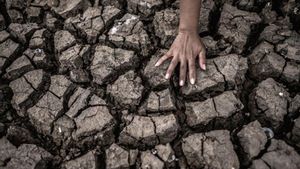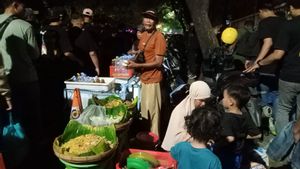SURABAYA - The Central Statistics Agency (BPS) of East Java recorded that the number of poor people in the local province in March 2023 fell to 4.19 million people compared to September 2022, which recorded 4.24 million people.
"This number has decreased by 47.7 thousand people since September 2022, totaling 4.24 million people," said Head of BPS East Java Zulkipli, in a written statement reported by ANTARA, Tuesday, July 18.
According to him, according to the East Java BPS records, from 4.24 million people in September 2022, the East Java poor decreased by 47.7 thousand people in March 2023, to 4.19 million people.
If percentageed, in March 2023 it reached 10.35 percent or decreased by 0.14 percent since September 2022 which reached 10.49 percent.
In annual data, in the period March 2022 to March 2023, the percentage figure of poor people in East Java also decreased by 0.03 percent.
In addition, there was a smaller change in the poverty line from September 2022 to March 2023 by 3.97 percent.
"In March 2022 to September 2022, it reached 5.86 percent, so the change in the poverty line in East Java has indeed decreased from last year," he said.
The cause of the change, according to Zulkipli, during September 2022 to March 2023 the poverty line if calculated per capita in East Java increased by 3.97 percent.
"That's from Rp487,908 per capita as of September 2022 to Rp507,286 per capita as of March 2023, so this changes the poverty line," said Zulkipli.
VOIR éGALEMENT:
In addition, food commodities are the largest contributor to 75.78 percent of the poverty line in East Java and this figure has increased compared to the previous period in September 2022.
"The role of food commodities in the poverty line is much greater than the role of non-food commodities such as housing, gasoline, electricity and others by 24.22 percent," he said.
If detailed, he continued, there are five food commodities that have the largest contribution to the poverty line when compared to September 2022 to March 2023.
"The commodity of rice is the first, in March 2023 at 20.03 percent, then filter kretek cigarettes at 12.51 percent, chicken meat at 3.87 percent, chicken eggs at 3.66 percent and tofu at 2.68 percent, it's all in urban areas," he said.
In rural areas, he continued, rice commodities in March 2023 reached 22.69 percent, filtered kretek cigarettes were 10.71 percent, chicken eggs were 3.44 percent, chicken meat was 3.40 percent and different, namely sugar at 2.63 percent.
Zulkipli explained, apart from food commodities, there are also five non-food commodities that are still the largest contribution to the poverty line in March 2023.
"Residentials in March 2023 reached 6.26 percent, Gasoline as motor fuel in March 2023 was also at 4.95 percent, the third was electricity at 2.61 percent, then education reached 1.79 percent and finally in toiletries it reached 1.26 percent, all of which were in urban areas," said Zulkipli.
Meanwhile, he continued, the five commodities in rural areas were recorded, housing was the first at 6.82 percent, gasoline 4.73 percent, electricity 1.80 percent, toiletries to the fourth at 1.17 percent and education to the last 1.02 percent.
"So actually there are a total of 52 food commodities and 51 non-food commodities, but we only exemplified five of each commodity," he said.
The English, Chinese, Japanese, Arabic, and French versions are automatically generated by the AI. So there may still be inaccuracies in translating, please always see Indonesian as our main language. (system supported by DigitalSiber.id)















